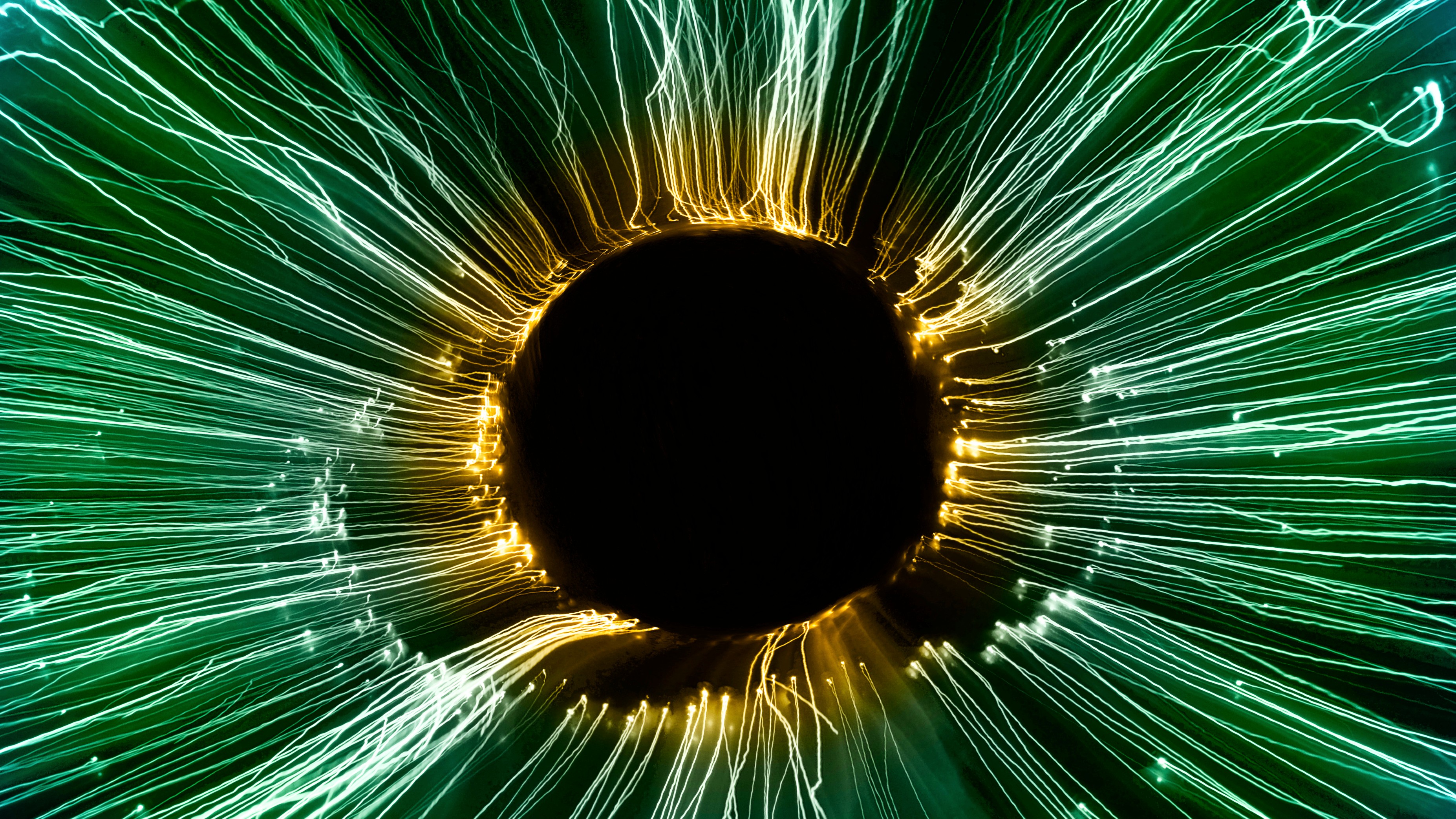America’s Previous Coast-To-Coast Eclipse Almost Proved Einstein Right
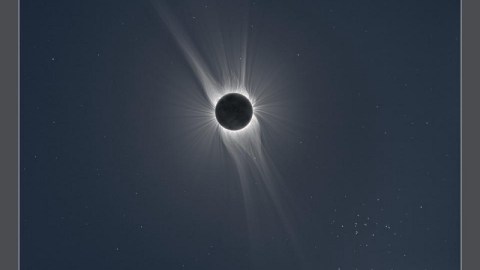
99 years ago, General Relativity was still unproven. During the 1918 eclipse, a small team of Americans almost changed that.
“Astronomers are greatly disappointed when, having traveled halfway around the world to see an eclipse, clouds prevent a sight of it; and yet a sense of relief accompanies the disappointment.” –Simon Newcomb
The most massive object in our Solar System is the Sun; the largest object in Earth’s skies is the Moon. When the right celestial configuration occurs, the shadow cast by the Moon falls on the surface of the Earth, creating a total solar eclipse. During the moments of totality, the skies darken, the Sun’s corona becomes visible, and stars will even pop out during the day. Even before the advent of modern technology and multiwavelength astronomy, it was the one opportunity to measure stars near the Sun, and test whether space, as Einstein predicted, was truly curved by mass. 1918 was the last time a coast-to-coast eclipse happened in the United States, and it was almost the first definitive proof of Einstein’s greatest theory of all.
https://players.brightcove.net/2097119709001/ry6mOavZe_default/index.html?videoId=5097193925001
A total solar eclipse is one of the most spectacular sights on Earth, and one that’s eluded the continental United States for nearly a century. Due to the elliptical, inclined orbits of the Sun, Moon and Earth, alignments where the Moon’s shadow passes across the Earth’s surface are rare, occurring only approximately once a year. Because of how much larger the Earth is than the Moon and how distant the Moon is, a total solar eclipse only occurs over a narrow range of the Earth at any given time. On August 21, 2017, the Great American Eclipse will occur, with a path of totality cutting from the Oregon coast all the way to the edge of South Carolina, casting darkness over 14 states. Although similar eclipses repeat in cycles, the lower 48 states haven’t seen a total solar eclipse that’s gone coast-to-coast since 1918, which almost confirmed Einstein’s greatest theory to the entire world.
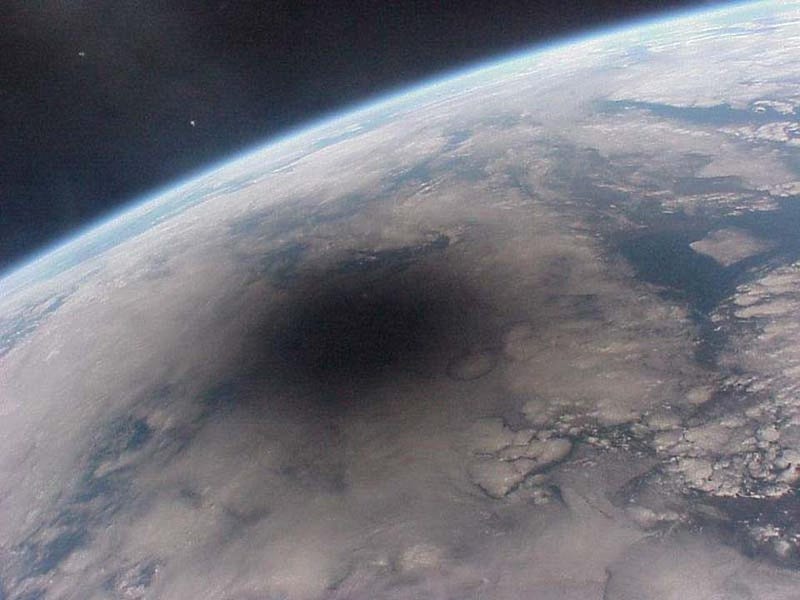
Back in 1915, Einstein put forth the culmination of a decade’s worth of work: the general theory of relativity. Instead of Newton’s theory of gravity, where massive objects at a distance exerted an invisible, instantaneous force on one another, Einstein instead predicted that the presence of matter and energy would curve the fabric of spacetime itself, and what we perceived as gravity was merely matter and energy following the path of this curved space. This wasn’t simply a different way of looking at the same phenomenon, but a new theory that gave rise to a different set of predictions for Mercury’s orbit, black holes, an expanding Universe and — perhaps most spectacularly — the bending of starlight.
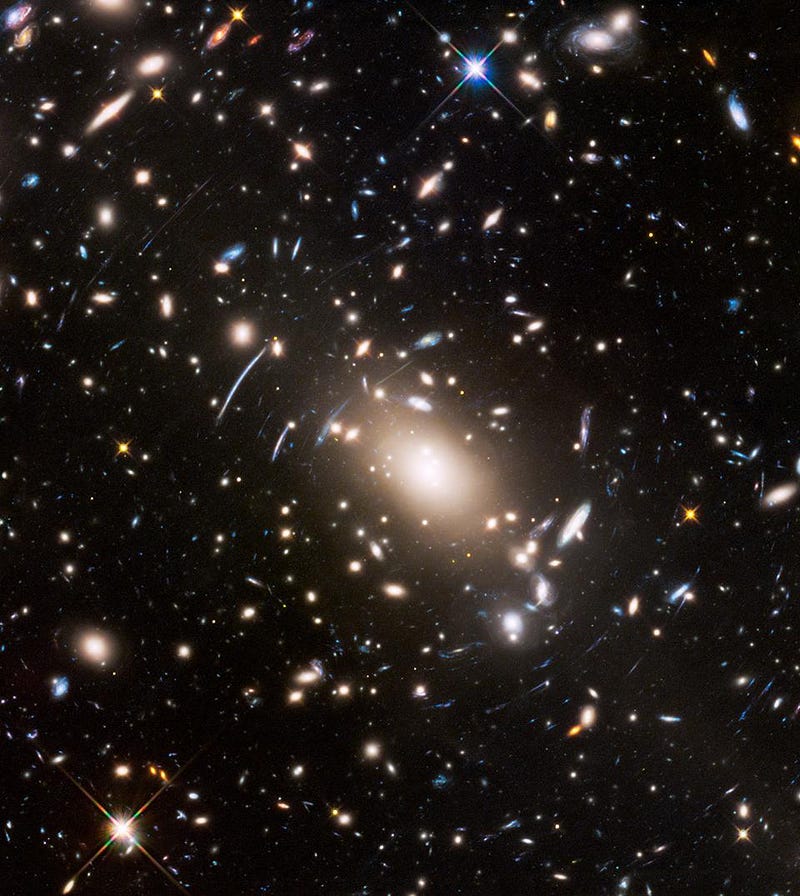
While modern technology like the Hubble Space Telescope has revealed hundreds of these gravitational lenses, nothing comparable existed in the early 20th century. Instead, a clever substitute was concocted by astrophysicists of the time: since the positions of stars were very well-known, you could observe stars close to the Sun during the day, where the Sun’s gravity would pull on those light rays. Since Einstein’s theory and Newton’s theory gave differing predictions for how much light would be bent by that extra gravitational force — with Einstein predicting double the Newtonian amount — simply comparing observations during the day with ones taken of those same stars at night would allow you to prove whether Einstein or Newton was right.
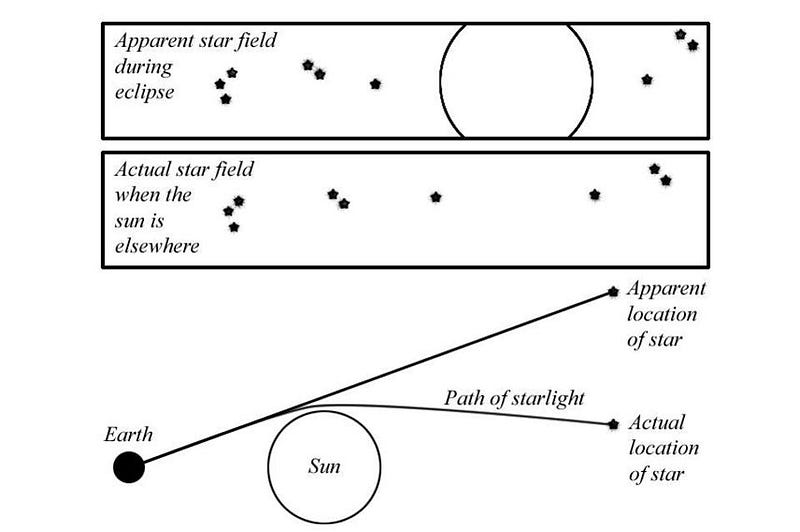
Of course, you can’t view stars during the day normally, since the Sun is far too bright. But during a total eclipse of the Sun, the Sun’s light is blocked from Earth, plunging the day into darkness and — for many observers along the path of totality — revealing stars during the day. Einstein put out his theory at the end of 1915, and the next total solar eclipse occurred just months later, on February 3, 1916. There was no time to organize an expedition on such short notice, particularly with World War I in full swing. But the next eclipse was to occur on June 8, 1918, and would be the first chance humanity would have to test Einstein’s theory against Newton’s directly. At a time where Europeans, not Americans, were the world’s leaders in science and technology, this would have been a huge coup for the scientific community.
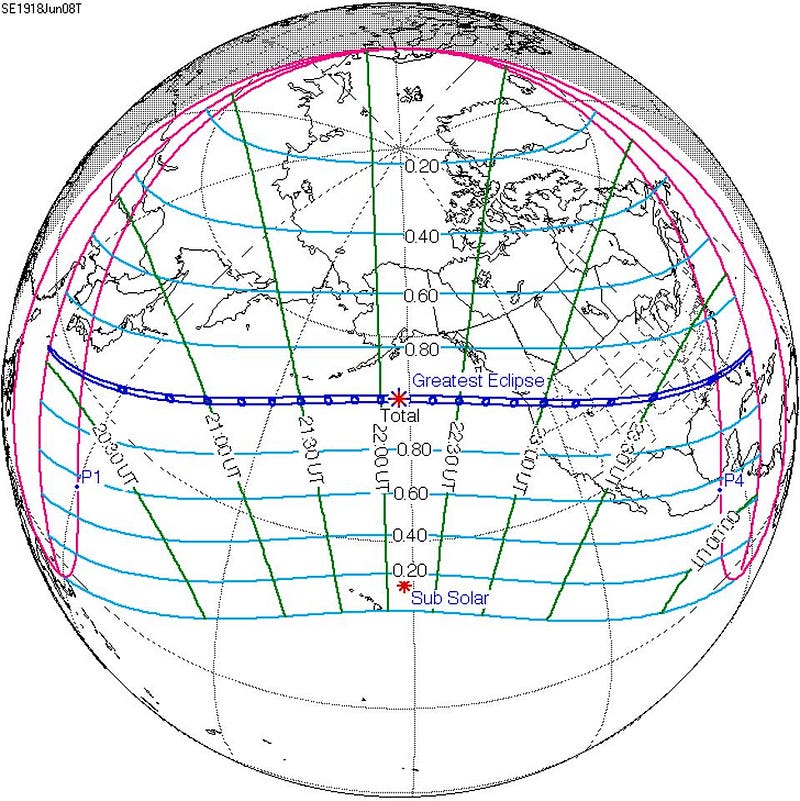
The relative orbits of the Sun, Moon and Earth had been known so precisely for so long that the predictions for eclipse times and locations were known to the second and to better than a single kilometer. A team of physicists were sent by the U.S. Naval Observatory to observe the eclipse where its duration would (over land) be the greatest: at Baker City in Oregon. The expedition leader was John C. Hammond, while the lead physicist was Samuel Alfred Mitchell, an expert on solar eclipses who’d been observing (and photographing!) them under the auspices of the U.S. Naval Observatory since 1900. In fact, photographs of total solar eclipses dating back even that far show stars revealed during the day!
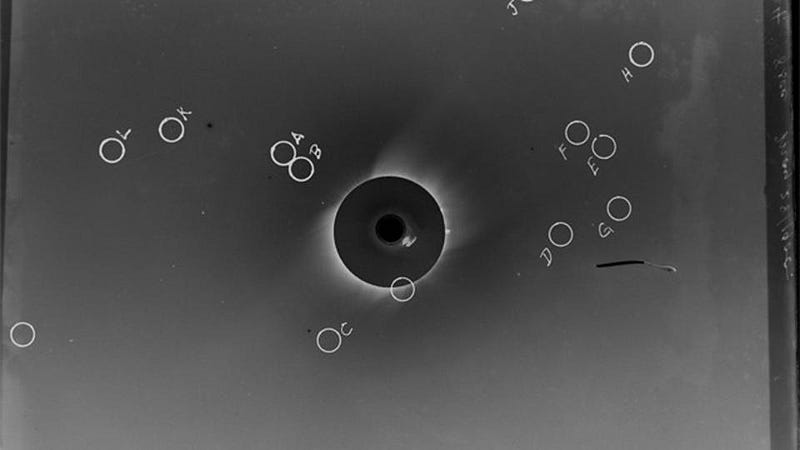
The team also included physicist and artist Howard Russell Butler, who was charged with painting the solar eclipse. While the Moon slowly moved across the Sun’s disk, a mostly cloudless sky heralded great excitement for the team, as many stars near the Sun would have been visible under those conditions. But the duration of eclipse darkness was to last just barely two minutes, and with totality approaching, thin clouds began to cover the Sun just prior to the critical moments where the sky grew dark. For about 15 minutes, including all of totality, the Sun was eclipsed not only by the Moon, but by clouds as well. Not five minutes after it ended, the area surrounding the Sun was completely clear again. Although Butler created an amazing painting, revealing many features of the Sun’s corona through the clouds, no stars were observed, and Einstein’s theory remained untested.
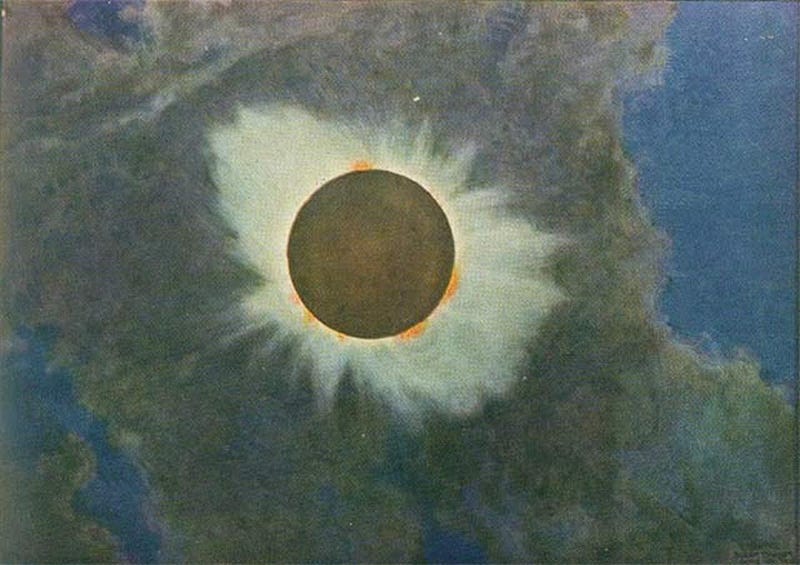
The next total solar eclipse, in 1919, was observed by two teams led by Arthur Eddington: one in South America and one in Africa. By combining data from both teams, a number of stars were not only successfully observed, they were observed to be deflected by the Sun’s gravity by an amount in accord with Einstein’s predictions, notNewton’s. Eclipses continued to occur all across the world, revealing many other opportunities to view stars during the day and — if one liked — to confirm Einstein’s relativity all over again.
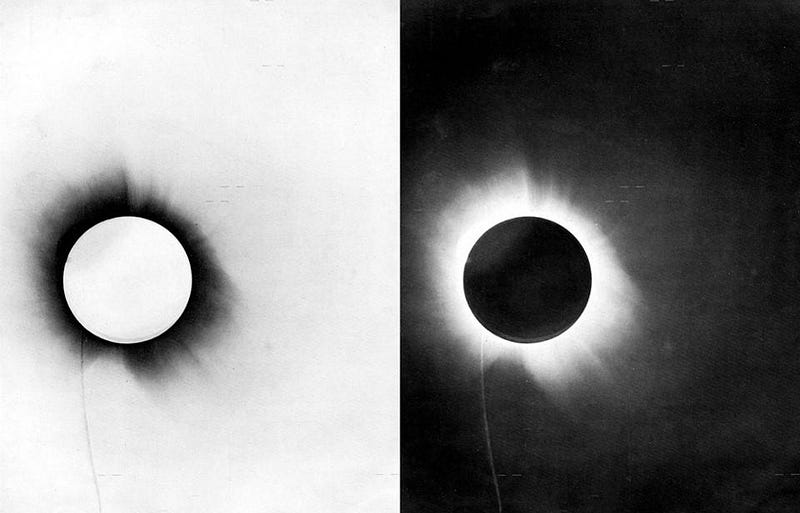
Meanwhile, the continental United States wouldn’t see another eclipse until the present day, a streak that will finally come to an end next year: on August 21, 2017. But if you get clouded out this time, don’t despair. Totality returns to the United States in 2024, and then again in 2045 and 2052. Although hotels, campgrounds, and special-event venues are already booked solid, there’s nothing to stop you from driving down to the path of totality the night before. Pack into your car, bring lots of water (and some food), and when totality does arrive, look for the Sun’s corona and stars during the key moments.
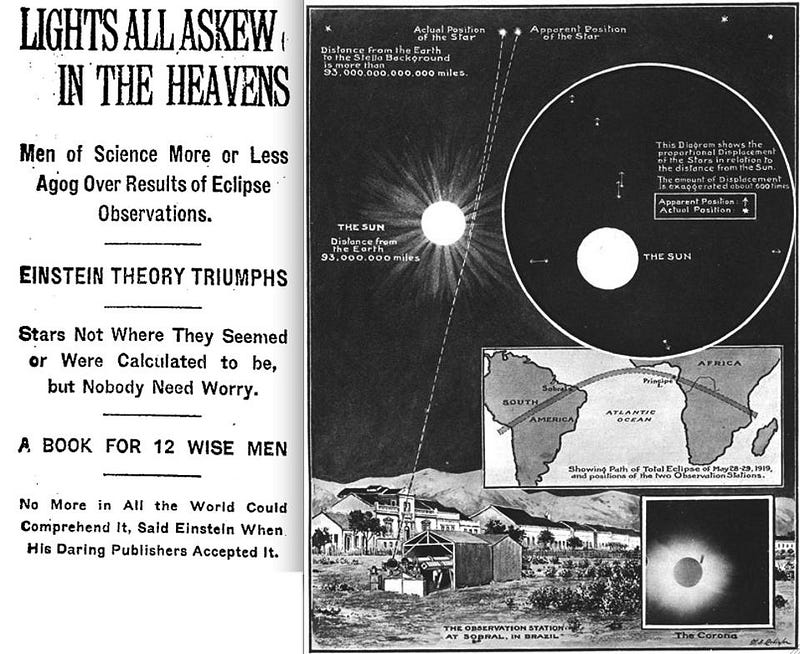
Just maybe, when you see those stars appear, know that you’re seeing a piece of history that eluded some of the countries greatest scientists a full 99 years ago. What you’ll see isn’t just a spectacular sight, but a window into the most brilliant physics theory of all time.
Ethan Siegel is the author of Beyond the Galaxy and Treknology. You can pre-order his third book, currently in development: the Encyclopaedia Cosmologica.




